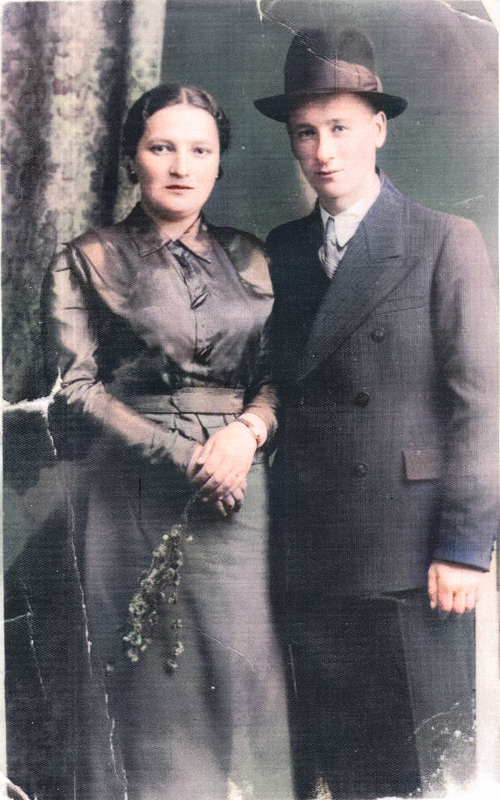Comunitatea evreiască din Rona de Sus
🇷🇴 În Rona de Sus sau Ober – Rina în idiș, primii evrei s-au stabilit la începutul secolului al XVIII-lea. După 1850 au venit mai mulți evrei, astfel că în 1880 aici trăiau 236 de evrei, în 1910 539, iar la ultimul recensământ, cel din 1941, aici mai trăiau doar 388 de evrei.
Evreii din sat, cu câteva excepții, duceau un trai modest. Mulți dintre aceștia lucrau la mina de sare din Coștiui, unii în agricultură sau în exploatarea lemnului.
Sinagoga a fost ridicată în secolul XIX, însă comunitatea era arondată comunității de rit ortodox din Velîkîi Bîcikiv. În perioada interbelică în Rona de Sus trăia rabinul Reb Eizik Rubin împreună cu curtea sa hasidică.
Unul dintre cei mai renumiți fii ai satului a fost Wolf Tambur, scriitor în limbă idiș. Din cărțile acestuia avem șansa să cunoaștem expresii și zicale caracteristice evreilor maramușeni.
Evreii din Rona de Sus au avut part de două deportări. Prima s-a întâmplat în anul 1941. Câteva zeci de familii au fost trimiși spre moarte sigură în localitatea Kameaneț-Podilskîi. Cei rămași au fost deportați în anul 1944. Majoritatea au fost uciși în Auschwitz.
După război s-au întors 37 de supraviețuitori. Aproape toți au emigrat în scurt timp. Azi în Rona de Sus nu mai trăiesc evrei.
🇭🇺 Felsőrónára (Ober – Rina jiddis nyelven) a 18. század elején érkeztek az első zsidó telepesek. 1850 után újabb zsidók kezdtek beköltözni a faluba, népességük 1880-ban 236, 1910-ben 539, 1941-ben pedig 388-at személyt ért el.
Felsőróna zsidó lakossága – néhány kivételtől eltekintve – szerény életet élt. Legtöbben a rónaszéki sóbányában dolgoztak, mások a mezőgazdaságban vagy a fa kitermelésében.A zsinagóga a 19. században épült, azonban a közösséget a nagybocskói ortodox közösséghez rendelték. A háborúk közötti időszakban Reb Eizik Rubin rabbi Rónában élt haszid udvarával együtt.
A falu egyik legismertebb fia Wolf Tambur, jiddis nyelvíró. Könyveinek köszönhetően megismerhetjük a máramarosi zsidó közösség kifejezéseit és közmondásait.
Felsőróna zsidó lakosságának két deportálást kellett elviselnie. Az első 1941-ben történt. Több tíz családot deportáltak Kameaneț-Podilskîiba. A megmaradt zsidókat pedig 1944-ben deportálták. Legtöbbjüket Auschwitzban ölték meg.
A háború után 37 túlélő tért vissza. Túlnyomó többségük rövid idő után emigrált. Ma Felsőrónán nem nincs zsidóélet.
🏴 In Rona de Sus (Ober – Rina in Yiddish), the first Jewish settlers arrived here at the beginning of the 18th century. After 1850, more Jews started to move into the village; their population reached 236 individuals in 1880, 539 in 1910, and 388, in 1941, when the last census was taken.
The Jewish population of Rona, with a few exceptions, were living a modest life. Most of them were working at the salt mine from Coștiui, others in agriculture or wood exploitation. The synagogue was built in the 19th century; however the community was assigned to the orthodox community from Velîkîi Bîcikiv.
During the interwar period, the Rabbi Reb Eizik Rubin lived in Rona alongside his Hasidic court. One of the most renown sons of the village was Wolf Tambur, Yiddish language writer. Due to his books we are able to know expressions and proverbs of the Jewish community from Maramures.
The Jewish population of Rona de Sus had to endure 2 deportations. The first happened in 1941. Tens of families were sent to certain death in Kameaneț-Podilskîi. The rest of them were deported in 1944. Most of them were killed at Auschwitz.
After the War, 37 survivors returned. The vast majority of them emigrated after a short time. Today, no Jews live in Rona de Sus.
ℹ️ YadVashem








